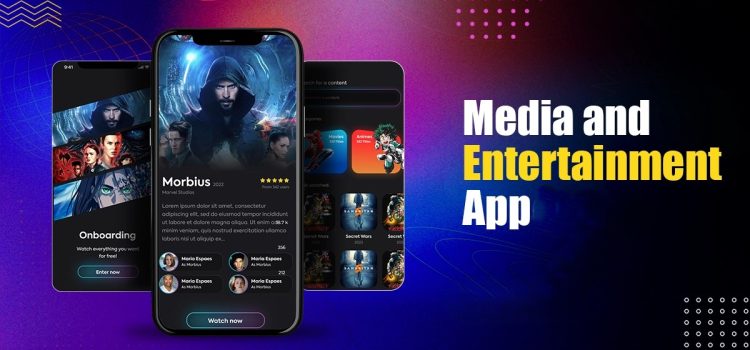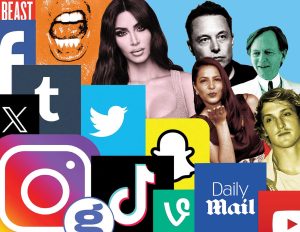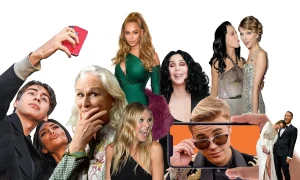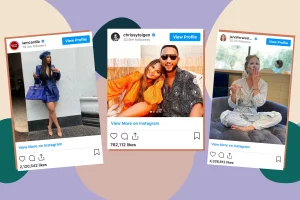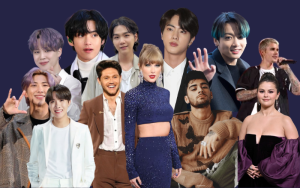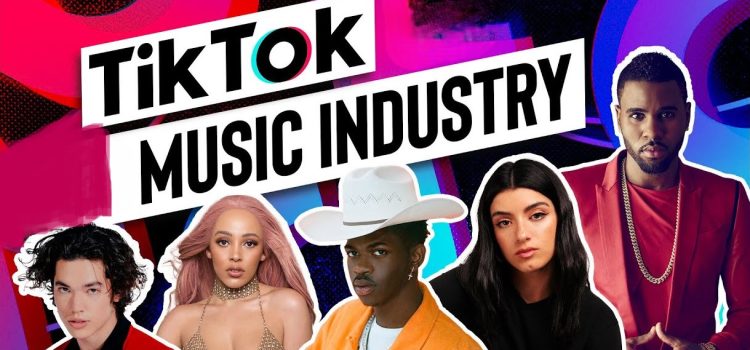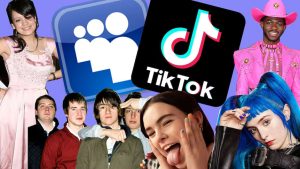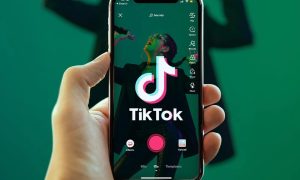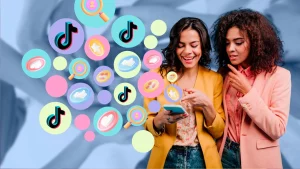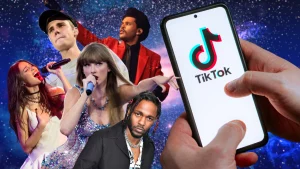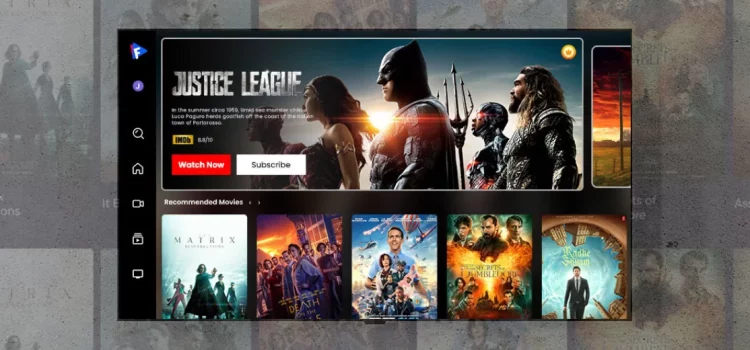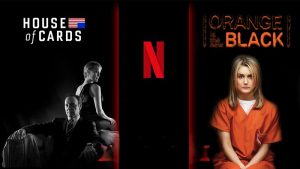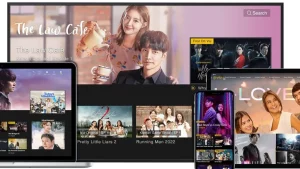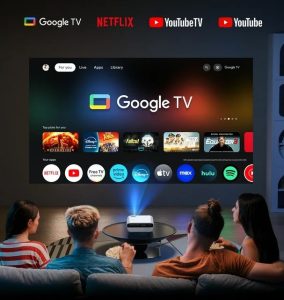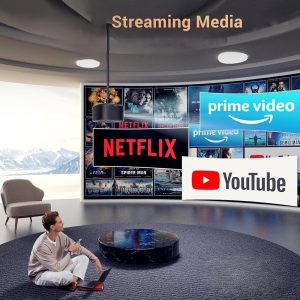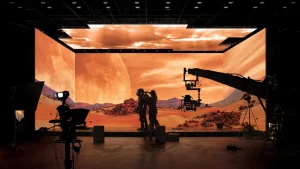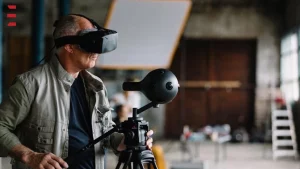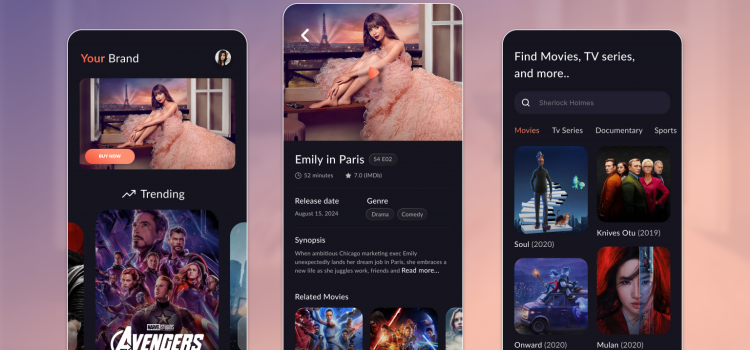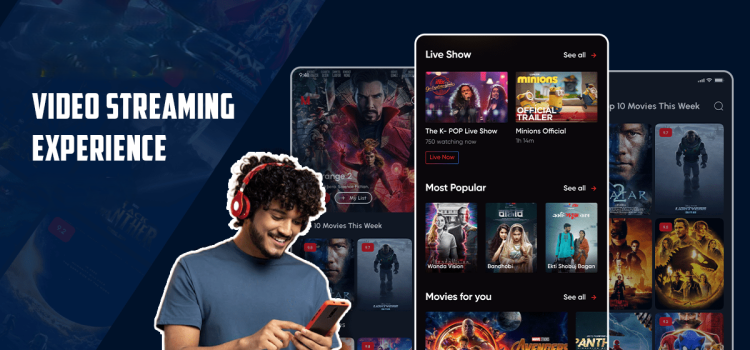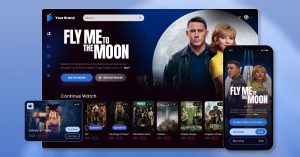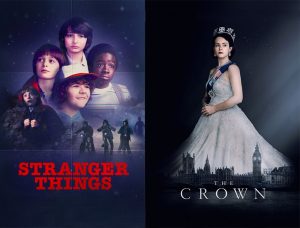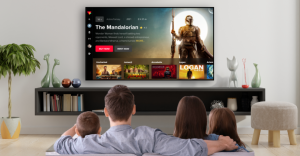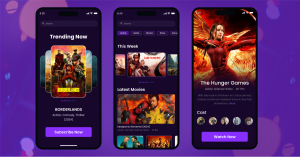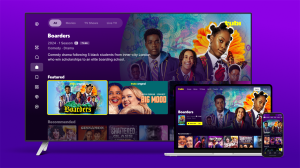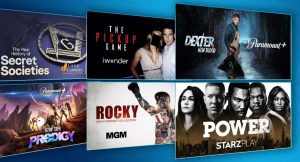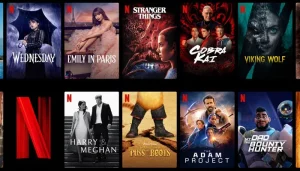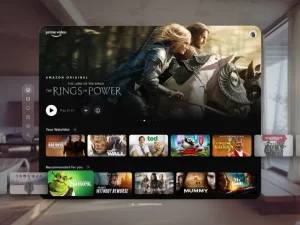
Introduction
In 2025, apps will continue to change the way we enjoy media and entertainment. Whether it’s movies, music, or video games, these apps will offer new and exciting ways to consume content. Let’s take a look at the top 10 media and entertainment apps expected to shape the future.
Top 10 Media and Entertainment Apps 2025
1. Netflix: A Leader in Streaming
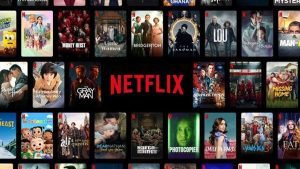
Netflix has been a big name in streaming for a long time, and by 2025, it will still be one of the top choices. The app will use advanced technology to recommend content based on your preferences. It will also offer new features like virtual reality (VR) and augmented reality (AR), giving users a unique experience. Netflix will keep creating original shows and movies, keeping viewers hooked.
Key Features:
- Personalized recommendations
- Virtual reality and augmented reality content
- Exclusive original movies and shows
2. Spotify: Music on Demand

Spotify is the go-to app for music lovers, and in 2025, it will be better than ever. Spotify will have AI that helps suggest music based on your tastes and even offer live concert streaming. The app will also work with smart home devices, making it easy to play your favorite tunes anywhere.
Key Features:
- Personalized music recommendations
- Live concert streaming
- Smart home integration
3. YouTube: Watch and Engage
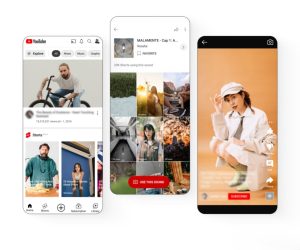
YouTube is the biggest platform for video content, and by 2025, it will be even smarter. The app will recommend videos based on what you like, and live streams will become even more interactive. YouTube will also offer more exclusive shows for premium subscribers, making it a top choice for video content.
Key Features:
- Smart video recommendations
- Interactive live streaming
- Exclusive premium content
4. TikTok: Short-Form Fun
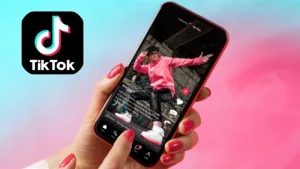
TikTok will continue to be a leader in short-form video content. In 2025, it will have an even better algorithm that can predict trends before they happen. TikTok will also allow users to shop directly from videos, making it easier for users to buy products they see. Expect more creative tools for both viewers and creators.
Key Features:
- Trend-predicting algorithm
- In-video shopping
- More interactive features
5. Twitch: Streaming for Gamers

Twitch is known for live streaming, especially for gaming. By 2025, Twitch will not only focus on gaming but also expand into other types of live content, like talk shows and lifestyle streams. It will also improve its VR features, letting users experience a more immersive way to watch streams.
Key Features:
- Interactive live streams
- Virtual reality support
- Expanded content beyond gaming
6. Apple TV+: High-Quality Originals
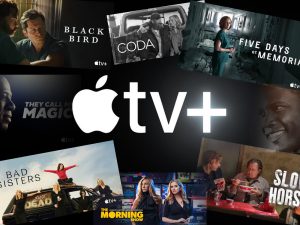
Apple TV+ will continue to attract users with its focus on exclusive, high-quality content. By 2025, Apple TV+ will offer even more movies, TV shows, and documentaries. The app will use AI to recommend shows based on what you like to watch, giving you a more personalized experience.
Key Features:
- Exclusive, high-quality content
- Personalized recommendations
- More partnerships with top creators
7. Disney+: Family Entertainment
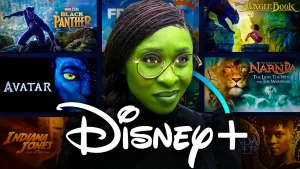
Disney+ is already a favorite for families, and in 2025, it will continue to grow. Expect more content from Disney, Marvel, and Star Wars, along with AI-driven suggestions to help you find the best family-friendly content. Disney+ will also introduce new original shows and movies to keep fans engaged.
Key Features:
- More Disney, Marvel, and Star Wars content
- Family-friendly recommendations
- Exclusive new content
8. HBO Max: Premium Content
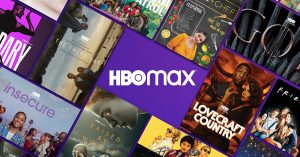
HBO Max has built a reputation for offering premium TV shows and movies. By 2025, it will continue to provide exclusive content from top creators. The app will also release content in real time, giving users faster access to the latest shows. More interactive and immersive content will be added, making it a top pick for viewers.
Key Features:
- Premium content like movies and TV shows
- Real-time releases
- Interactive content options
9. Amazon Prime Video: A Wide Library
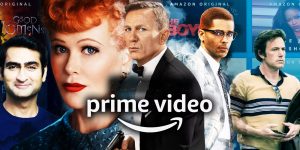
Amazon Prime Video is already a popular streaming service, and by 2025, it will offer even more content. Expect a mix of exclusive shows, movies, and documentaries. Prime Video will also integrate e-commerce, allowing users to shop while watching their favorite shows. AI will help suggest content based on your preferences.
Key Features:
- Wide variety of exclusive content
- Integration with Amazon shopping
- Personalized recommendations
10. Vimeo: Professional-Grade Video Content

Vimeo is known for offering high-quality video content, and by 2025, it will become even more popular among filmmakers and content creators. The app will offer advanced tools for editing and creating professional videos, making it a top choice for anyone looking to produce high-quality content.
Key Features:
- High-quality video content
- Advanced editing tools
- Platform for independent filmmakers
The Growth of Streaming Services
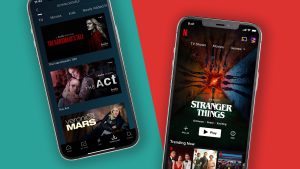
Streaming services have grown tremendously over the years. What started with a few platforms, like Netflix and Hulu, has expanded into a huge industry. Today, there are many streaming services, each offering different types of content. This growth has made it easier for people to find the exact content they want to watch. Whether it’s movies, TV shows, documentaries, or live events, streaming apps have something for everyone. As more people cut the cord from traditional cable, streaming has become the go-to choice for entertainment.
The Rise of User-Generated Content
User-generated content is another big trend in the media and entertainment world. Platforms like YouTube, TikTok, and Instagram have allowed anyone with a phone or camera to become a content creator. This has led to a huge explosion in creativity, with people from all over the world sharing their videos, music, and stories. For viewers, it means more diverse content, while creators get a chance to build audiences and even make a living from their work. This shift is changing how we think about media – it’s not just about professional studios anymore, but about everyday people creating content too.
Impact on Traditional Media

Media and entertainment apps are also impacting traditional media, like TV and radio. More people are choosing to stream content online instead of watching traditional TV shows or listening to the radio. This has led to changes in how media companies operate. Many traditional media outlets have started offering their own streaming services or have partnered with existing platforms to reach a wider audience. This shift is forcing older media companies to adapt and find new ways to keep their viewers engaged.
Accessibility and Global Reach
One of the biggest advantages of media and entertainment apps is their accessibility. People all over the world can access movies, TV shows, and music, no matter where they live. This has helped bring people from different cultures together. For example, someone in the United States can easily watch a popular TV show from the UK, or a person in India can enjoy a Bollywood movie that was once hard to find outside the country. This global reach has opened up opportunities for content creators to share their work with a much larger audience than ever before.
Social Media and Entertainment Apps Together
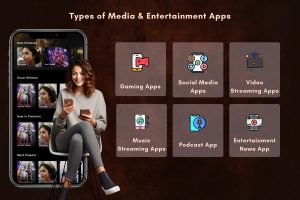
Social media and entertainment apps often work hand-in-hand. Many entertainment apps have built-in social features, allowing users to share what they are watching or listening to with their friends. Apps like TikTok and YouTube also allow viewers to interact with content creators through likes, comments, and live streams. This interaction makes the experience more engaging, as users feel like they are part of the conversation. The connection between social media and entertainment apps is only going to grow in the future, with more interactive and community-focused features.
Challenges Faced by Media and Entertainment Apps
Despite their popularity, media and entertainment apps face challenges. One major challenge is keeping content fresh and appealing. With so many options available, it can be hard for apps to stand out. Another issue is competition. More and more platforms are entering the market, making it harder for existing ones to maintain their user base. Additionally, piracy and illegal sharing of content remain ongoing problems for these apps, leading to lost revenue for content creators.
Future of Media and Entertainment Apps
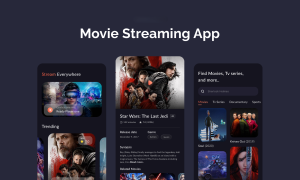
The future of media and entertainment apps looks bright. As technology advances, these apps will become even more interactive and immersive. Expect to see more virtual reality (VR) and augmented reality (AR) features, making the content even more exciting. AI will also play a big role, helping apps suggest content more accurately based on what you enjoy. With these advancements, the way we consume and interact with media will continue to evolve, offering users even better and more engaging experiences.
Comparative Table of Top 10 Media and Entertainment Applications in 2025
| Application | Key Features | Target Audience | Unique Selling Point |
|---|---|---|---|
| Netflix | Personalized recommendations, VR/AR content | Movie and TV lovers | Exclusive, original content |
| Spotify | Music recommendations, live concerts | Music fans | Personalized music experiences |
| YouTube | Smart video recommendations, live streaming | General viewers | Interactive features and live streams |
| TikTok | Trend-predicting algorithm, in-video shopping | Social media users | Quick, viral video content |
| Twitch | Interactive streams, VR support | Gamers and streamers | Expanded beyond gaming |
| Apple TV+ | Exclusive, high-quality content | Movie and TV lovers | Original programming from top creators |
| Disney+ | Family-friendly content, Disney/Marvel/Star Wars | Families and kids | Extensive catalog of family content |
| HBO Max | Premium TV shows, real-time releases | Movie and TV lovers | Premium, exclusive content |
| Amazon Prime Video | Variety of content, shopping integration | General viewers | Integration with Amazon shopping |
| Vimeo | Professional video content, editing tools | Filmmakers and creatives | High-quality production and editing tools |
Analysis of Media and Entertainment Applications
| Application | Strengths | Weaknesses | Potential for Growth |
|---|---|---|---|
| Netflix | Large selection of exclusive content | Competition from other streaming platforms | VR/AR features and global reach |
| Spotify | Personalized music experience, live concerts | Expensive ad-free options | Partnerships with artists and live events |
| YouTube | Free access to videos, live streaming | Ads in the free version | Increased interactivity and exclusive content |
| TikTok | Easy to use, viral content | Content overload | E-commerce integration and influencer collaborations |
| Twitch | Strong community, immersive streaming | Limited to gaming, niche audience | Expansion into non-gaming content |
| Apple TV+ | High-quality original content | Small content library | More partnerships with top directors |
| Disney+ | Popular family-friendly content | Limited content outside core franchises | New original shows and movies |
| HBO Max | Premium TV shows, fast content releases | Expensive compared to other services | More interactive features and faster releases |
| Amazon Prime Video | Large content library, integration with Amazon | Not as user-friendly as competitors | More exclusive content and shopping integration |
| Vimeo | High-quality video production tools | Smaller audience | More focus on independent filmmakers |
Conclusion
By 2025, the media and entertainment apps we use will continue to evolve, offering more personalized and interactive experiences. From Netflix’s original shows to Spotify’s personalized music and TikTok’s viral trends, each app has its own strengths. The future of entertainment will rely on innovative technology, user engagement, and new content models. These apps will shape how we enjoy movies, music, and more in the years to come.








